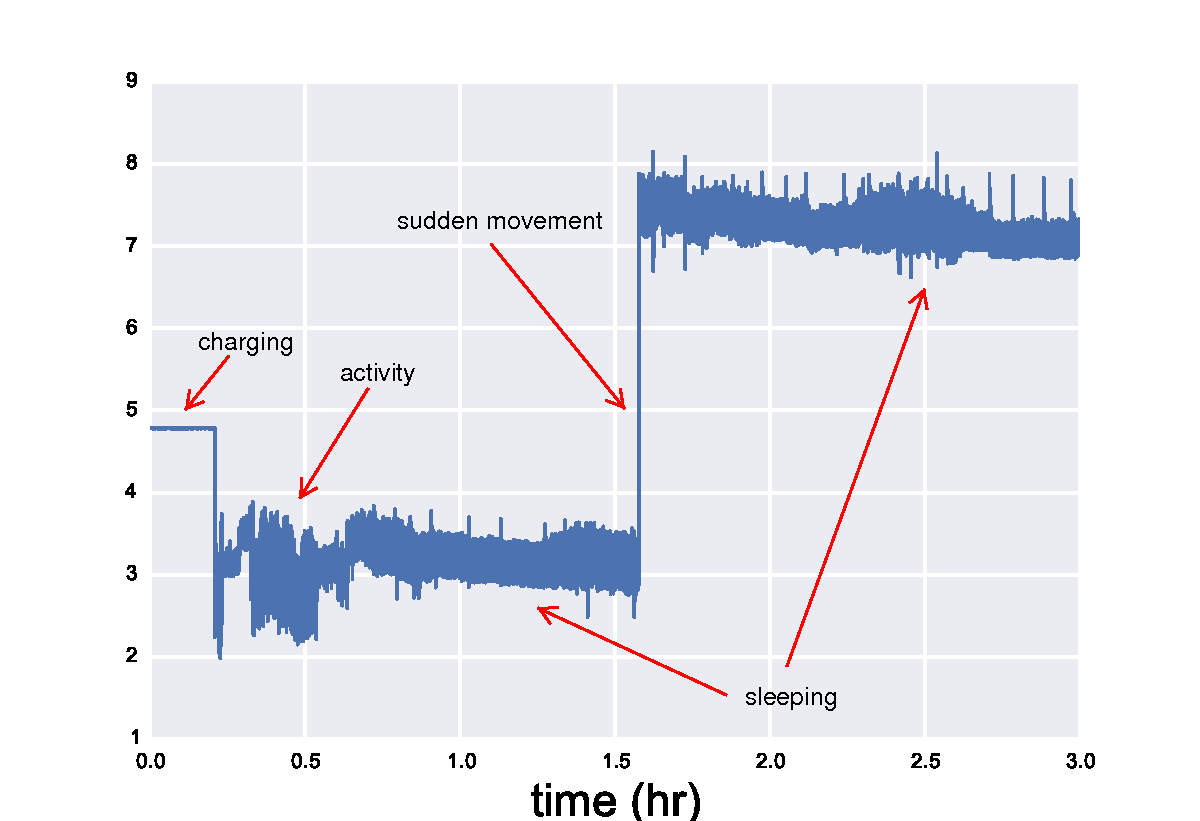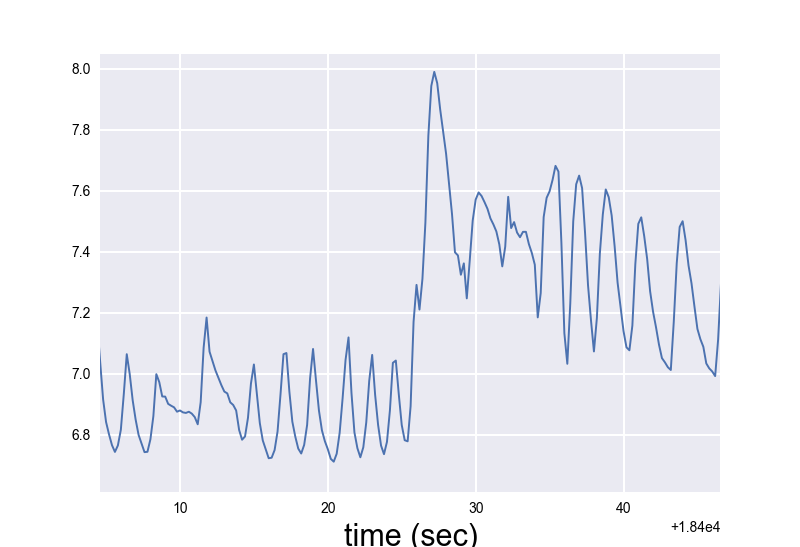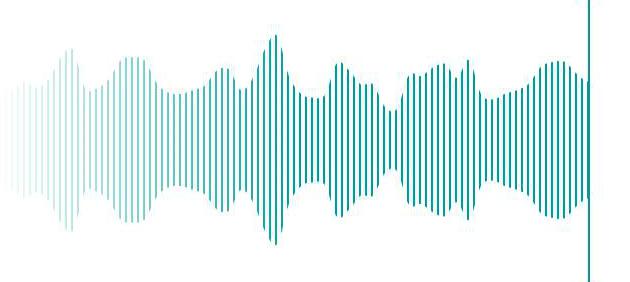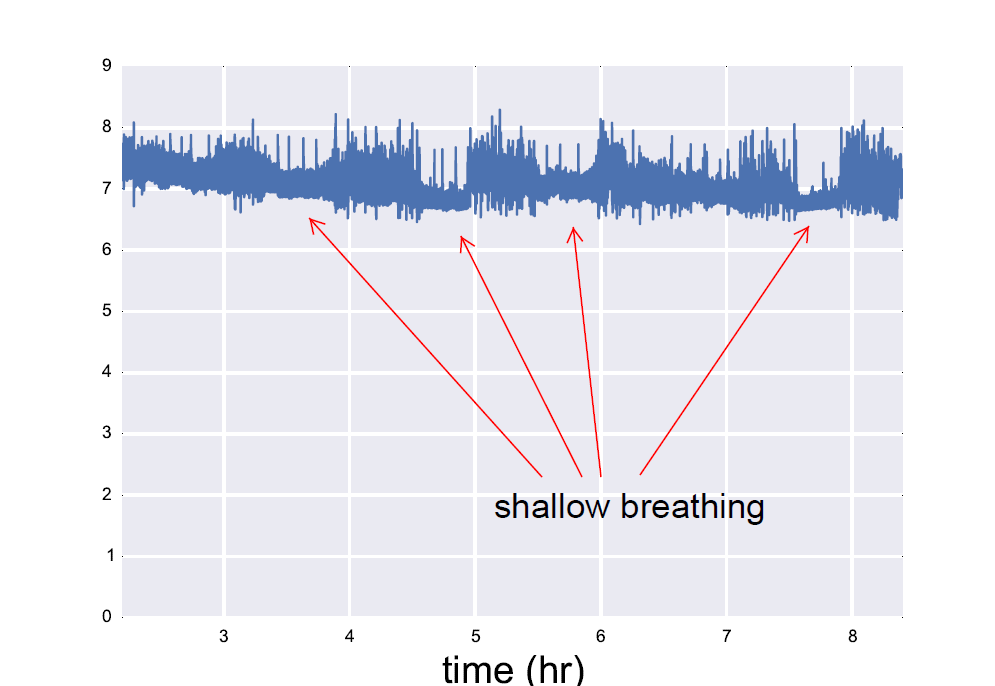 We have put a huge amount of time and effort into ensuring that the respiration graph displayed in the app and the alerts sent out about respiration are accurate. Even more than this, we believe that you have a right to know how we generate these graphs and alerts so that you really understand what they mean. This blog post will walk you through our process.
We have put a huge amount of time and effort into ensuring that the respiration graph displayed in the app and the alerts sent out about respiration are accurate. Even more than this, we believe that you have a right to know how we generate these graphs and alerts so that you really understand what they mean. This blog post will walk you through our process.
When we look at the respiration data right off the sensor over a night of sleep it looks something like this:

The first thing we do is figure out if the Turtle is on a baby. Obviously, it would be totally unhelpful to send you a graph or alert if the Turtle is sitting on the changing table while your baby is happily gurgling in front of you. We do this by looking at all the data we can: the respiration data, both at a given moment and for the past couple of minutes; the temperature data; and the activity data. By combining all these factors we have a pretty good idea of what is actual respiration data and what is just noise.
The next thing we do is normalize the respiration to the movement. Basically, any time your baby moves around, the sensor shifts slightly and distorts the reading. This is why our respiration sensor works best when your baby is asleep: they don’t move around as much!

This graph is on the scale of a night—about 8 hours of breathing data. That’s why it’s hard to see individual breathes. Zoomed in, the data looks like this:

This jump is the result of a very small movement. You would hardly be able to see it on the graph that looks at the whole night’s worth of data. Since we know babies make small movements like this while sleeping, we filter the respiration data with the activity data and generate the graph below, which should look similar to what you might see if you are currently using the monitor.

This isn’t always perfect. We can’t distinguish 100% of the time between movement of the baby and a change in respiration. This is especially true if the kimono is very loose on the baby or far from the chest (i.e. worn over several layers of clothing.) Don’t get us wrong—the monitor should work great if the kimono is worn over some footie pajamas or isn’t perfectly snug, but in the extreme these could decrease the accuracy of the sensor. If you need to dress your baby with multiple, thick layers, we recommend using the kimono as one of the lower base layers.
Now for the heavy stuff: the alerts. We have been refining the analysis used for generating alerts for years now, in association with physicians and hospitals and lots and lots of trials. At the end of it all, there are three factors that need to be true for an alert to be sent:
(1) The Turtle needs to be on a sleeping baby. We won’t send you an alert if the Turtle isn’t on your baby or if your baby is wide awake and kicking. However, we have seen problems with a couple users where the wake/sleep detection isn’t 100% accurate, maybe because the baby is very young and does not move much when awake, or maybe because the kimono is too loose on the baby and moves around when the baby is asleep. There is also a possibility that we think the Turtle is on your baby when it’s sitting on a table! This rarely happens, but it could be because of an extremely hot environment (part of our check is temperature) or some other, environmental anomaly.
(2) The breathing has dropped below a certain threshold. Everyone’s breathing gets deeper and more shallow cyclically through the night. You can see this on the first graph if you look closely (I’ve highlighted them below). This is completely natural and nothing to be worried about, so we don’t send alerts when this occurs. The threshold that we set is unique for each baby and based on factors like the latest breathing levels, recent movement, and how far the sensor is from the skin.

(3) A certain amount of time has passed. Just as with deep and shallow breathing, short pauses are completely normal during sleep and nothing to be worried about. The method we have developed here is based on thousands of hours of breathing data from babies and is constantly being updated as we see more.
This three-factor approach makes our alerts very accurate, which means most people will very rarely see a respiration alert.
Every baby is different and every situation for every baby is different, but when we look at the data recorded we don’t know where your baby is, what they are doing, or what they are wearing. It’s like doing a puzzle, or being a detective. Two data sets could look very similar but come from different situations. On top of that, we cannot anticipate every unique situation! Every day we learn more and update our approach to reflect what we’ve learned. False alerts should be very rare, but when they do occur they are a great learning experience for us and only make our methods more accurate.



